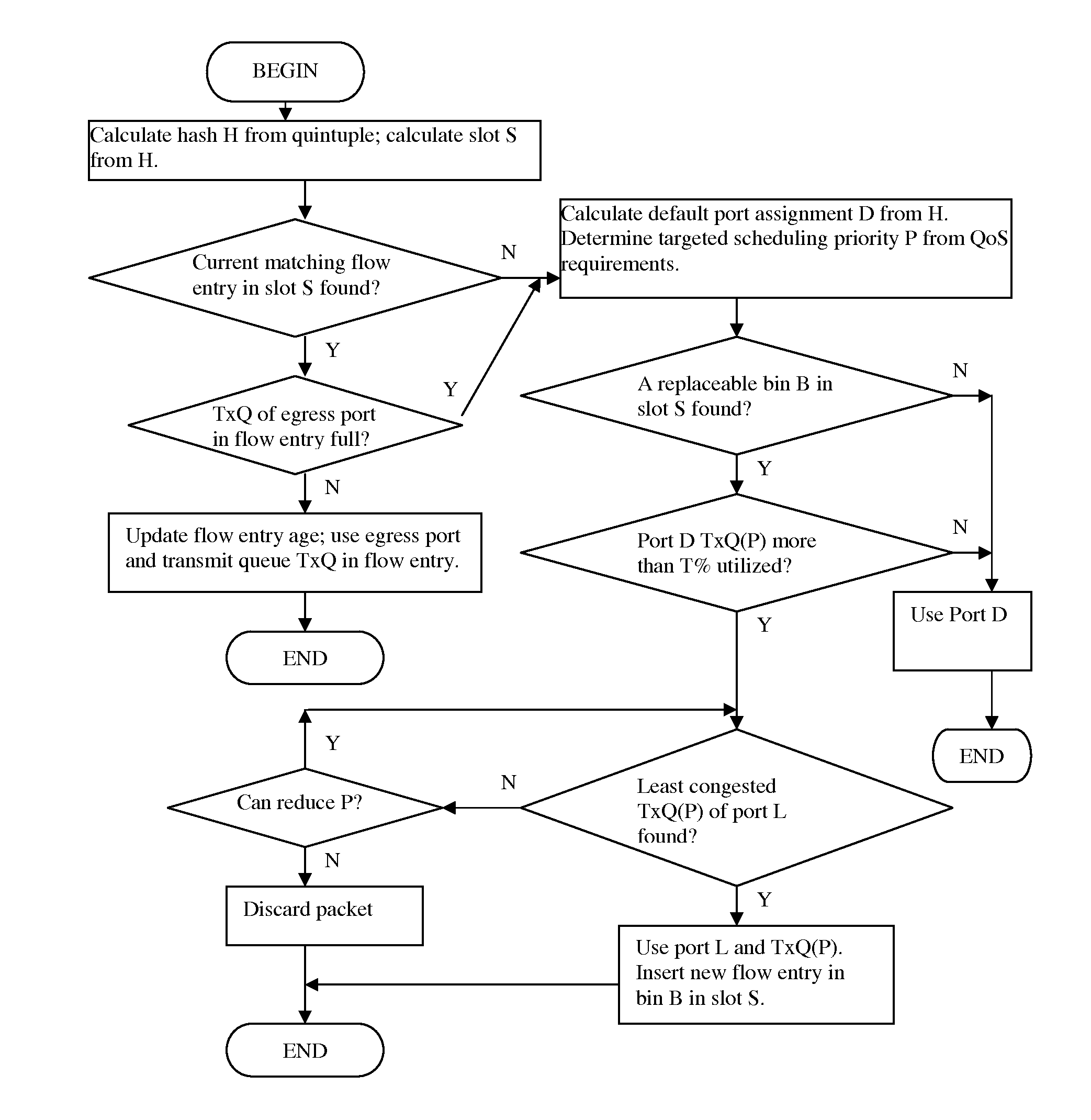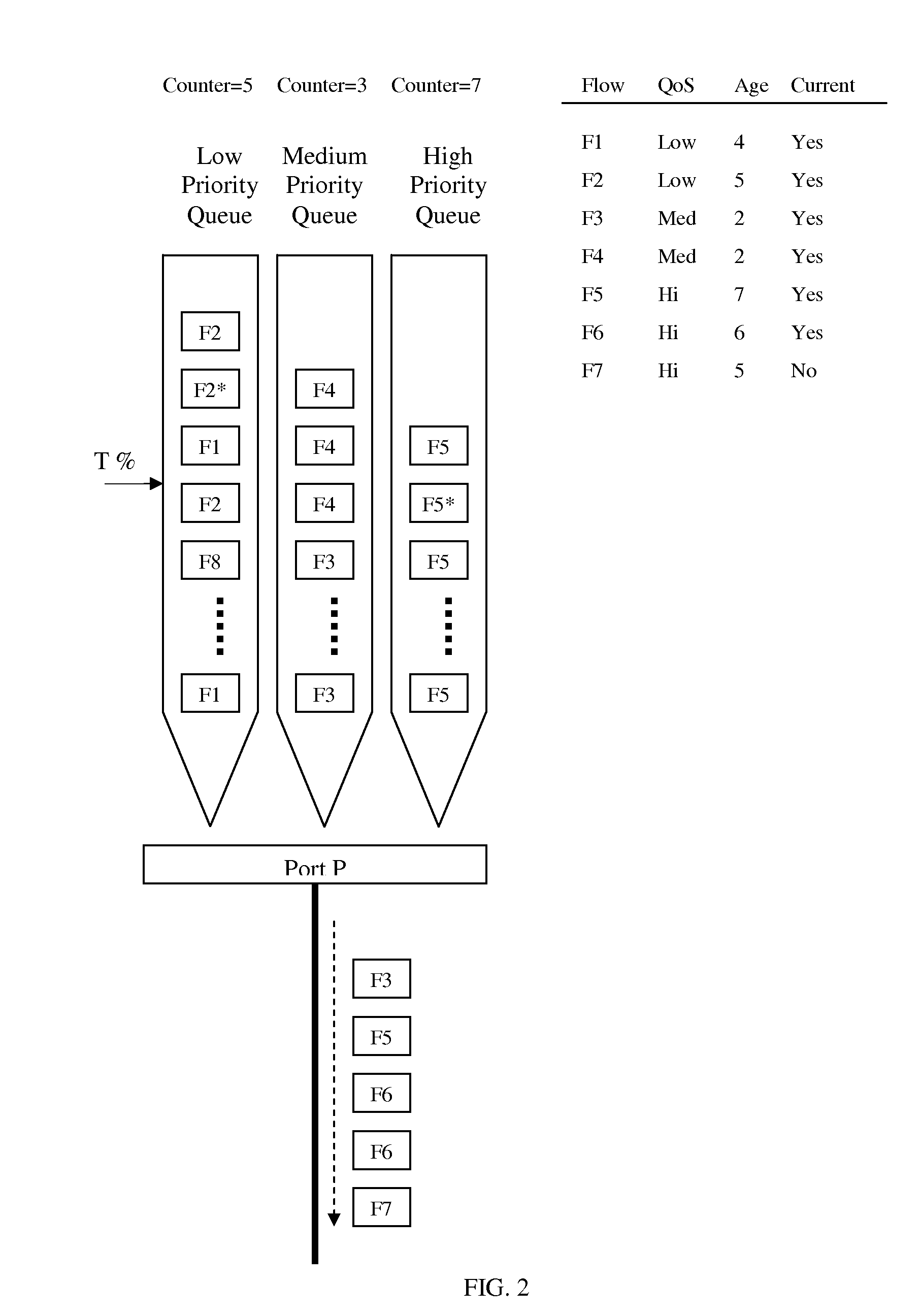QoS-aware flow-based dynamic load balancing for link aggregation
a dynamic load and load balancing technology, applied in the field of data communication, can solve the problems of inability to address the impact of preventing out-of-order packet delivery and suboptimal utilization of link bandwidth
- Summary
- Abstract
- Description
- Claims
- Application Information
AI Technical Summary
Benefits of technology
Problems solved by technology
Method used
Image
Examples
Embodiment Construction
[0015]A method for QoS-aware dynamic load balancing of packet flows on link aggregation (LAG) is disclosed. Said method relies on a static load balancing algorithm until near congestion, and in near-congestion condition overrides the default decisions from static load balancing algorithm based on traffic load on physical ports and QoS requirements on a per-flow basis.
[0016]Static load balancing algorithms are adequate when congestion is far from sight. Taking advantage of that premise, a device that uses the method disclosed herein can dedicate less resource by focusing on dynamic load balancing in near-congestion condition.
[0017]In our preferred embodiment, the static load balancing algorithm comprises: calculating a hash value based on a quintuple of the packet consisting of destination IP address, source IP address, IP protocol number, destination port number, and source port number; and assigning the egress port based on said hash value. We shall refer to the decisions from said...
PUM
 Login to View More
Login to View More Abstract
Description
Claims
Application Information
 Login to View More
Login to View More - R&D
- Intellectual Property
- Life Sciences
- Materials
- Tech Scout
- Unparalleled Data Quality
- Higher Quality Content
- 60% Fewer Hallucinations
Browse by: Latest US Patents, China's latest patents, Technical Efficacy Thesaurus, Application Domain, Technology Topic, Popular Technical Reports.
© 2025 PatSnap. All rights reserved.Legal|Privacy policy|Modern Slavery Act Transparency Statement|Sitemap|About US| Contact US: help@patsnap.com



